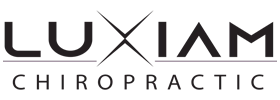Lower Back Pain Relief in Reno NV
How chiropractic in Reno NV can help lower back pain. Regular chiropractic treatment is another great conservative care option for not only overall health but also back pain. The gentle adjustments that your practitioner can apply during an appointment help to realign the spine for better overall function. These adjustments not only help your whole body feel better, but they can also fend off inflammation and help your body heal better. Your chiropractor will also help you pinpoint which at-home exercises are best to keep your back strong and free of pain!
How We Help Lower Back Pain In Reno NV
Comprehensive Consultation and Exam: A thorough history and consultation with your doctor who will really listen to your concerns and health goals is a critical first step in any care plan. Initial exams include a chiropractic, functional, orthopedic, and neurological exam to best understand the cause of your pain and get to the root cause of the problem.
There are dozens of low back pain specialty tests, but here are a few that you can perform on yourself at home.
The Forward Bend Test
Stand up straight with your hands at your side. Bend forward and reach to your toes as far as you can go.
Negative test: Your low back pain does not get worse when you bend over at the waist.
Positive test: If your pain gets worse when bending over the test is positive
What does a positive test mean? When performing the test, if the pain goes down the back of the leg, your pain might be caused by a disc irritation, a nerve root irritation, or a facet joint irritation.
Quadrant Test
Stand up straight with your hands on your waist. Bend your spine backward (extension) then side bend and rotate to the side of your spine that you have pain. Repeat this on the opposite side as well.
Negative Test: This test is negative if the position does not reproduce your pain.
Positive Test: If you get into the testing position and the test reproduces your low back pain.
What does a positive test mean? If the pain stays in your low back, it means that your back pain is likely being caused by some kind of facet joint irritation. These are the small joints on either side of your spine.
If the pain occurs in the top of the hip or down the leg, it means that there is likely pressure being put on the nerve roots that are coming out of your spinal cord.
Slump Test
Sit at the edge of a table or chair. Slouch over and tuck your chin down to your chest. Bring one of your ankles into dorsiflexion (bring your toes up towards your nose). Straighten your knee until you feel a pull anywhere from your low back to the bottom of your foot. Most people will feel a pull behind the knee. Once you feel a pull, look up towards the ceiling.
Negative Test: This test is negative when lifting your head does not decrease the stretch/pull/pain in the back of the leg when you lift your head up.
Positive Test: This test is positive when lifting your head relieves the pain by at least 50%.
What does a positive test mean? A positive slump test means that the nerves running from your back down to your foot have some kind of pressure on them and/or are not moving smoothly in the path that they travel. A positive test does not indicate nerve damage, only that movement of the nervous system is restricted.
Specific Chiropractic Care
Chiropractors specialize in the detection and correction of subluxations. When a joint is misaligned, it puts extra stress and pressure on the muscles and ligaments. The stress on the soft tissues creates irritation or a process of inflammation that can result in pressure on the surrounding nerves. This series of findings is known as a subluxation complex. The vertebral subluxation complex causes dysfunction in the spine and can result in pressure on the nerves as they exit the spine. Specific chiropractic adjustments correct subluxation by restoring movement to the body and decreasing the stress points in the surrounding soft tissues.
Exercises to Relieve Low Back Pain
1. Cat-Cow Stretch:
The cat-cow stretch is a useful exercise to help increase flexibility and ease tension in your lower back and core muscles.
To perform the cat-cow stretch get onto your hands and knees with your knees hip-width apart. This is the starting position. Arch your back by pulling your belly button up toward your spine, letting your head drop forward. This is the cat portion of the stretch. Hold for 5–10 seconds. You should feel a gentle stretch on your lower back. Return to the starting position.
Raise your head and let your pelvis fall forward, curving your back down toward the floor. This is the cow portion of the stretch. Hold for 5–10 seconds, then return to the starting position. Repeat the cat-cow stretch 15–20 times. You can also perform this exercise in a chair with your feet flat on the floor and your hands on your knees, making it perfect for sneaking in a few stretches at work.
2. Pelvic Tilt: The pelvic tilt exercise is a simple yet effective way to release tight back muscles and maintain their flexibility. To perform the pelvic tilt, lie on your back with knees bent, feet flat, and arms by your sides. The natural curvature of your spine will lift your lower back slightly off the floor. Gently arch your lower back and push your stomach out, stabilizing your core. Hold for 5–10 seconds, then relax. Push your pelvis slightly up toward the ceiling (your pelvis should not leave the floor) while tightening your abdominal and buttock muscles. In doing so, you should feel your lower back pressing into the floor. Hold for 5–10 seconds, then relax. Start with 10–15 repetitions daily, building up to 25–30.
3. Knee-To-Chest Movement This one may sound simple, but it packs so many benefits for your lower back! This light stretch can help coax some of the tight, spasming muscles around your back to unlock a bit. Trust us, that’s a very good thing!
Start by lying on your back with both knees bent. Engage your core and flatten your back toward the ground. Keeping your back flat on the ground, bring one knee up toward your torso; reach out with your hands and give it a gentle pull toward your chest to deepen the stretch and hold for about five seconds. Slowly lower your leg back down and repeat this with your other leg.
If you’re one of many people who is particularly tight and having difficulty with flexibility, you may find it challenging to reach out and grab your knee as you lift it. In this case, simply use a towel for assistance. Wrap the towel around the base of your knee and use the ends to gently pull your leg closer without compromising your lower back form. This is a common yoga move to help people advance through movements that they may struggle with at first.
Movements To Avoid
Though movement is good for your lower back, certain exercises can exacerbate existing pain. Always use pain and discomfort as an indicator when performing new activities, but also be aware some movements may be best to avoid altogether. These include standing toe touches, leg lifts, and any movement that involves twisting your back. Lower back pain is a painful condition that affects many people. Regular physical activity and stretching are proven ways to help reduce lower back pain and prevent it from returning.
Common Causes of Low Back Pain
Bulged Lumbar Discs: A disc is a ligamentous structure between the vertebrae that allow for movement and absorption of mechanical stress. They wear down and dehydrate over time when put under too much physical stress. Fibers begin to tear and the nucleus takes the path of least resistance which can result in a bulging presentation on MRI. If the bulged disc is severe, it can cause low back pain and pain that radiates down the leg.
Herniated Lumbar Discs: As a bulged disc progresses, the fibers tear more and the nucleus breaks through the exterior of the disc. Herniated discs can cause more leg pain and more intense pain than a low back strain. Surgery may be necessary if it doesn’t improve with conservative treatment.
Degenerative Disc Disease: Degenerative Disc Disease (DDD) is an age and trauma related condition when discs break down. Obesity, smoking, and work that is hard on the spine can all contribute to the onset of Degenerative Disc Disease. This condition can not be reversed but can be slowed if caught soon enough. Our office utilizes X-ray imaging to assess the health and condition of your spine as well as the most specific adjustments possible to restore movement and function to your body.
Spinal Stenosis: When the disc height reduces the space for the nerves to exit the spine, this is known as spinal stenosis. This condition can put pressure on the spinal cord or the exiting nerves causing pain, weakness, and numbness, as well as affect organ function like bladder or bowel control. Standing or walking can exacerbate pain while resting, sitting down, or bending forward can relieve the low back pain caused by spinal stenosis.
Muscle Strain: When the body is not moving evenly or distributing weight the way it is designed, muscles and ligaments can become strained. Muscle strains can be caused by sudden activity or over time with repetitive motion, poor posture, or weak neck muscles. Many times, muscle strains are able to resolve on their own, but you want to address them early so that scar tissue does not build up.
Sacroiliac Joint Dysfunction (SI Joint Pain): The SI joint is where the sacrum meets the pelvis. 15-30% of low back pain cases originate in the pelvis. The SI joint absorbs the shock between the upper body and the pelvis and legs. Causes of low back pain that originates in the pelvis can include leg length discrepancy, pregnancy, and repeatedly stressing the joints. In some cases, the joint can suffer from hypomobility, not enough mobility, or hypermobility, too much joint mobility.
Facet Joint Dysfunction: Facet joints, where the vertebrae meet, can become inflamed which can result in pain and altered movement. It’s actually the cartilage inside the facet joint that begins to break down and become inflamed. Extension and standing for long periods of time can aggravate the facet joints as they are supporting the weight of the body.
Frequently Asked Questions
Monday
7:00am - 6:00pm
Tuesday
7:00am - 6:00pm
Wednesday
7:00am - 6:00pm
Thursday
7:00am - 6:00pm
Friday
7:00am - 5:00pm
Saturday
8:30am - 1:00pm
Sunday
Closed
Luxiam Chiropractic
6815 Sierra Center Pkwy Suite 250
Reno, NV 89511



